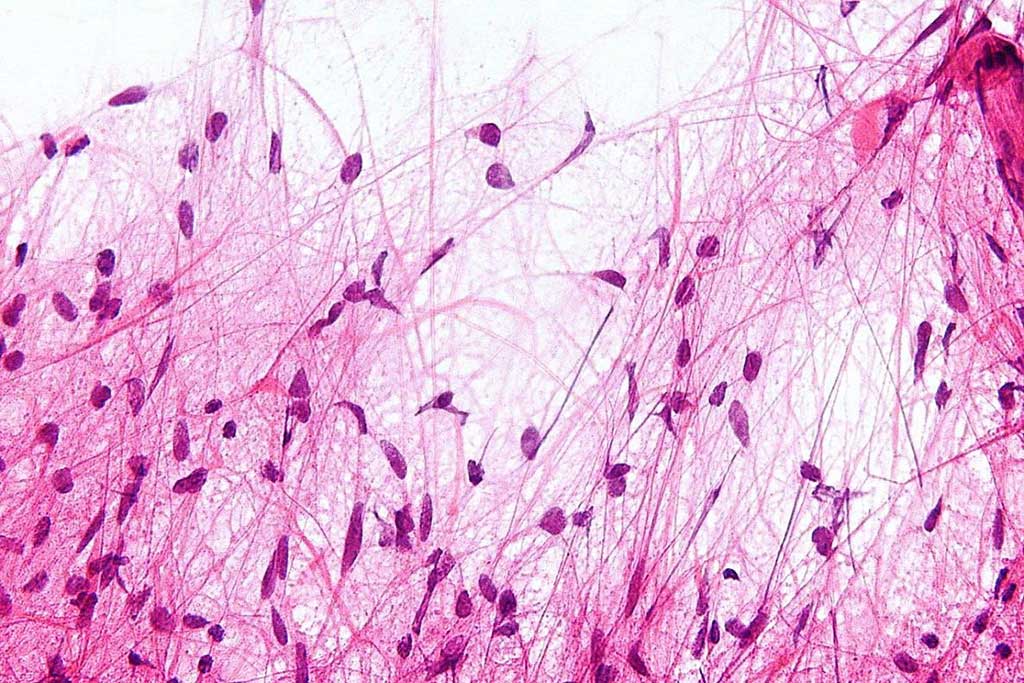Precision Oncology Confers Clinical Benefit in Relapsed Pediatric Cancer
By LabMedica International staff writers
Posted on 08 Jun 2020
The Individualized Therapy for Relapsed Malignancies in Childhood (INFORM) registry has been created to help develop precision medicine-based approaches and to analyze their effectiveness across high-risk relapsed or refractory pediatric cancers. Posted on 08 Jun 2020
Several pediatric precision oncology programs have identified molecular actionable variants. However, the clinical benefit is largely unknown. An algorithm designed to identify molecular targets for precision therapy extended time to disease progression for pediatric patients with relapsed cancer has been developed.

Image: Photomicrograph of pediatric pilocytic astrocytoma, a brain tumor, showing the characteristic bipolar cells with long hair-like processes (Photo courtesy of Nephron)
An international team of scientists led by those at the Hopp Children’s Cancer Center (Heidelberg, Germany) collected clinical and molecular data of 525 patients (median age, 12 years; range, 0-40) with refractory, relapsed or progressive malignant disease. Fresh frozen tumor material underwent whole-exome sequencing, low coverage whole-genome sequencing, RNA sequencing, RNA expression array and DNA-methylation. The investigators used a seven-step algorithm that prioritized molecular alterations or affected pathways potentially targetable by an approved or investigational drug. Priority levels, ranging from “very high” to “very low,” were based on certain characteristics, including druggability, genetic change or expression and direct drug target or pathway activation.
The team grouped patients by the highest priority target, ranging from molecular alterations to changes in gene expression in molecular pathways that are key to cancer development and survival. In all, 8% had a very high-priority target, 14.8% had a high-priority target, 20.3% had a moderate-priority target, 23.6% had an intermediate-priority target, 14.4% had a borderline-priority target, 2.5% had a low-priority target, 1% had a very low-priority target and 15.4% had no actionable target.
The scientists reported that among all patients, 149 received targeted treatment based on targets identified using the algorithm, including 20 patients with very high-priority targets. Most of these targets were ALK, BRAF and NRAS mutations, as well as MET and NTRK fusions. Results showed median progression-free survival (PFS) of 204.5 (95% CI, 91-628) days among patients with very high-priority targets compared with 114 (95% CI, 103-133) days among the other 505 patients. An explorative analysis showed patients with very high-priority targets had a higher time to progression ratio (1.0) than all other patients (0.7). The team identified possible predisposition syndromes among 7.8% of patients, half of which were newly diagnosed. Methylation analysis yielded a diagnosis refinement in 8% of central nervous system tumors.
Cornelis van Tilburg, MD, PhD, a pediatric oncologist and the senior study author, said, “Children with refractory, relapsed and progressive high-risk malignancies have poor survival of less than 20%. This registry has opened up the genomic landscape in pediatric oncology. It provides a unique source of information to help match new drugs or drug ideas with suitable biomarkers in certain pediatric patient populations.”
The authors concluded that pediatric precision oncology in a real world, multi-national setting is feasible. The prioritization algorithm identifies subgroups benefitting from molecularly matched targeted treatment. Still, for the patients without a very high priority target further layers of molecular and functional data should be incorporated in future programs. The study was presented at the American Society of Clinical Oncology (ASCO20) Virtual Scientific Program, held May 29-31, 2020.
Related Links:
Hopp Children’s Cancer Center










 (3) (1).png)


